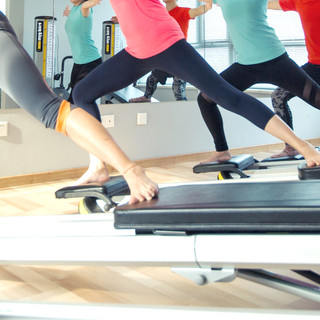Pilates - exercise to avoid in osteoporosis in older adults?
- Aug 14, 2020
- 2 min read
Pilates has become such a household name in the recent years and many trendy gyms and studios offer different classes such as Reformer Pilates and Tower machines. Even youtube offers so many options!
Originally Joseph Pilates, a physical trainer, started Pilates as exercises done on a mat, or using apparatus to strengthen and re-align the body. He created a genius system in which all of the tools interact with the ones used before and after, from the Reformer and the Cadillac to the human body. The basic principle was to start with positioning, breathing and movement. Then you gradually move up the number and rhythm of the exercises.
I invented all these machines... it resists your movements in just the right way so those inner muscles really have to work against it. That way you can concentrate on movement. You must always do it slowly and smoothly. Then your whole body is in it." - Joseph Pilates
Later, the Pilates exercises took off in the 2000s and was incorporated in different forms and reinvented for an effective way to strengthen muscles, improve posture and aligning the pelvis and also gained importance in physical therapy rehabilitation of older adults and people with osteoporosis mainly for 2 reasons:
It's great for strengthening muscles
Low to non-impact training provided by the pilates exercises.
People with osteoporosis often have muscle weakness and increased spine kyphosis leading to vertebral fractures and poor balance control, or even falls. Weight bearing exercises and low impact exercises are recommended for improving strength, balance and functional activities in osteoporosis since it causes bone weakening.
People with osteoporosis are often recommended Pilates as an addition to their fitness regime.
But beware – traditional Pilates, especially when done in a mat class (on the floor) involves an excess of motion for the spine that can actually put older adults or with osteoporosis at risk of spinal fractures. In fact 70% of exercises in Pilates are contraindicated for osteoporosis, disc pathologies and sciatica. Does that mean people with osteoporosis should avoid Pilates? Absolutely not. There are modifications for all the exercises but in this post I am listing some exercises that you should avoid !
Avoid these mat Pilates if you have osteoporosis, disc injuries or sciatica in older population:
General Contra- indications:
All rollups
All forms of crunches
Abdominal work
Pressure on the rib cage
Pigeon Pose


Contraindicated Pilates Mat-
Roll over 2. Spinal twist


3. Jack Knife 4. Single leg circles


5. Rocking 6. Spinal Stretch


Make sure to modify the exercises with the help of your Physical therapist or trainer! Remember all exercises need to be individualized when they are a part of rehabilitation.








